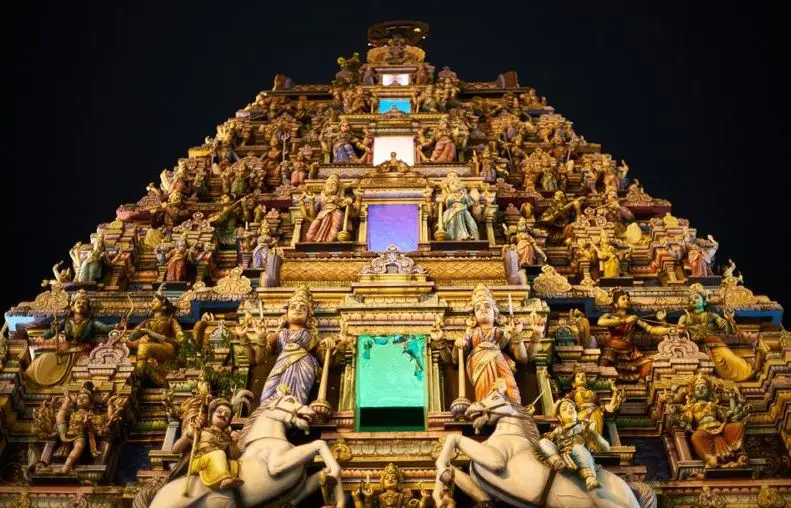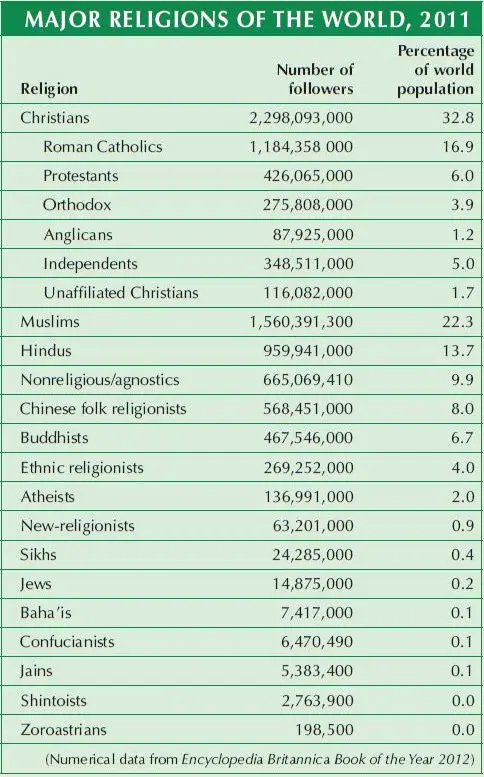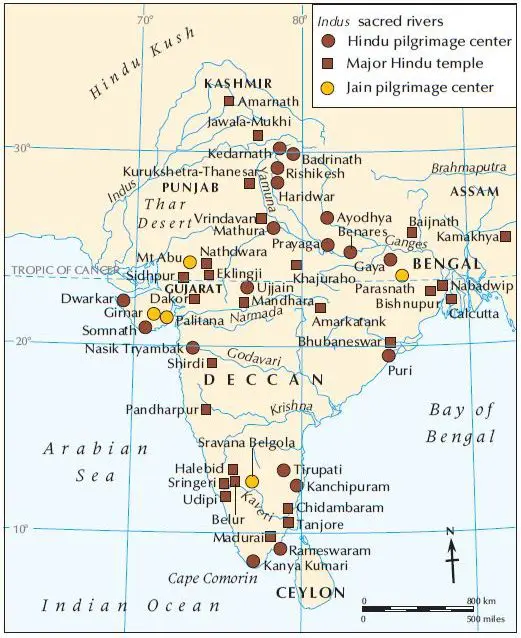Table of Contents
Hinduism | Origin, History, Beliefs, & Facts
This post begins with a brief history of early Hinduism, the most ancient of existing major religions, and analyzes its evolution as the principal cultural system of the Indian subcontinent. Buddhism emerged out of Hinduism in India and spread throughout central, eastern, and southeastern Asia, defining much of the cultural and religious life of this vast region.
What is unique in the history of Hinduism ?
Hinduism began before recorded time. The other major religions of the world claim the inspiration of a specific person or event Abraham’s covenant; the Buddha’s Enlightenment; Jesus’ birth; Muhammad’s revelation – but Hinduism emerged through the weaving together of many diverse, ancient religious traditions of India,some of which precede written records. Hinduism evolved from the experience of the peoples of India.
Hinduism is the oldest of the world’s leading religions, although its geographic range has been mostly confined to the peoples of south Asia, where its impact has been profound, exemplified by the sacred geography of the subcontinent. Rivers, mountains, and regions associated with divine mythology are important, and networks of pilgrimage centers and temples provide cultural unity.
The Origins of Hinduism | UPSC IAS
Because Hinduism preserves a rich body of religious literature written in Sanskrit, the language of the Aryan immigrants of 1700–1200 b.c.e., scholars believed until recently that Hinduism was a product of that migration. Even the excavations at Mohenjo-Daro and Harappa, which uncovered a pre-Aryan civilization, did not at first alter these beliefs. But as excavation and analysis have continued, many scholars have come to believe that the Indus valley civilization may have contributed many of Hinduism’s principal gods and ceremonies.
Excavated statues seem to represent the god Shiva, the sacred bull Nandi on which he rides, a man practicing yogic meditation, a sacred tree, and a mother goddess. Archaeologists increasingly argue that the Aryans absorbed religious beliefs and practices, along with secular culture, from the Indus valley and from other groups already living in India when they arrived. Contemporary anthropological accounts support this idea that Hinduism is an amalgam of beliefs and practices. These accounts emphasize Hinduism’s remarkable ability to absorb and assimilate tribal peoples and their gods. Today, 100 million people, about ten percent of India’s population, are officially regarded as adivasis, original inhabitants (previously referred to as “tribals”). These peoples were living in India before the arrival of the Aryans, and they have largely attempted to escape Aryan domination by retreating into remote hilly and forested regions, where they could preserve their own social systems.
Hindus have, however, pursued them and their lands, building temples in and around tribal areas. These temples recognize tribal gods and incorporate them with the mainstream deities in an attempt to persuade the adivasis to accept Hindu religious patterns. Indeed, one of Hinduism’s most important gods, Krishna, the blue/ black god, was apparently a tribal god who gained national recognition. As India’s peoples have been diverse, so its evolving religious system is diverse.
The concept of “Hinduism” as a unified religion comes from outsiders. Greeks and Persians first encountering India spoke of India’s belief systems and practices collectively as “Hinduism,” that is, the ways of the peoples on the far side of the Indus River. When Muslims began to arrive in India, beginning in the eighth century c.e., they adopted the same terminology.
Sacred Geography and Pilgrimage | UPSC IAS
Hinduism is closely associated with a specific territory, India. Almost all Hindus Live in India or are of Indian descent. Within India itself a sacred geography has developed. Places visited by gods and by saints, as well as places of great natural sanctity, have become shrines and pilgrim destinations.
Pilgrims traveling these routes have created a geography of religious/national integration, and modern transportation in the form of trains, buses, and airplanes has increased the pilgrim traffic throughout India.
Some of the most important shrines are at the far corners of India, such as Dwarka on the far west coast, Badrinath in the far north, Puri on the east coast, and Rameshwaram near the southern tip. Travel to all these shrines would thus provide the pilgrim with a “Bharat Darshan,” a view of the entire geography of India. Such pilgrimage routes have helped to unify both Hinduism And India.
Each locality in city and village is also knit together by religious shrines, ranging from the simple prayer niche, containing pictures and statues of the gods of the kind found in even the most humble home; through neighborhood shrines, nestled perhaps in the trunk of an especially sacred tree; to local and regional temples.
The Central Beliefs of Hinduism | UPSC – IAS
Hinduism has none of the fixed dogmas of most otherworldly religions, and great flexibility and variety of beliefs exist under the general term “Hindu.” Nevertheless, sacred texts do provide a set of beliefs and orientations toward life that are very widely shared. Over time, the introduction of new texts to the Hindu legacy marked the evolution of Hinduism as a living, changing system of beliefs and practices.
The Rigveda. Between about 1500 and 1200 b.c.e. brahmin priests of the nomadic pastoralist Aryan peoples entering India composed the Rigveda, a collection of 1028 verses of Sanskrit poetry, the oldest and most venerated of the four books called, collectively, Vedas. These verses invoke many early gods, including –
- Agni, the god of various kinds of fire;
- Indra, a phallic god of rain and fertility;
- Surya, god of the sun; and
- Varuna, the sovereign of the world who assures that the cosmic law is maintained.
They include references to music, dance, and acting as modes of worship Vedic worship also takes the form of animal sacrifice offered on sacred altars. The Rigveda speculates on the creation of the world and on the significance of life in this world, but it does not pretend to offer conclusive answers:
Caste System in Hinduism | UPSC – IAS
The Rigveda also introduces the mythic origin and rationale of the caste system, one of the most distinctive features of Hindu life. Caste began, the Rigveda suggests, in a primeval sacrifice of a mythical creature, Purusha. He was carved into four sections, each symbolizing one of the principal divisions of the caste system.
Apparently, the Aryans were even then thinking of a social system that separated people by occupation and sanctioned that separation through religion. The caste system that developed in India was probably the most rigidly unequal and hierarchical of any in the world. Caste status was hereditary, passing from parent to child at birth. Each caste was subject to different local legal rules, with upper castes being rewarded more generously and punished less severely than lower. Only upper castes were permitted to receive formal education, and the separate castes were not to intermarry nor even to dine with one another. Their vital fluids were distinct and different, and the blood and semen of one group were not to mingle with those of another. The food fit for one group was not necessarily appropriate for others: brahmin priests were to be vegetarians, but kshatriya warriors were to eat meat.
Commentators throughout the centuries have searched for additional roots of the caste system, more grounded in social, economic, and political rationales. Many have seen India’s caste system as a means of ordering relationships among the multitude of immigrant groups in India’s multiethnic population, consolidating some at the top and relegating others to the bottom. Others have seen caste as the result of a frozen economic system, with parents doing all they could to make sure that their children maintained at least the family’s current occupational status. They sacrificed the possibility of upward mobility in exchange for the security that they would not fall lower on the social scale.
Many suggested that the system was imposed on the rest of the population by an extremely powerful coalition of brahmin priests and kshatriya warrior–rulers. Such dominant coalitions are common in world history, and the Indian situation was simply more entrenched than most. Historians employ the insights of anthropologists as they attempt to understand the historical origins and basis of the caste system. Anthropological observation shows that the four generalized castes of the Vedas are not the actual groupings that function in practice today.
Instead, India has tens of thousands of localized castes, called jatis—indeed, there are thousands of different brahmin groups alone. In practice, caste is lived in accordance with the accepted practices of these local groupings, in the 750,000 villages, towns, and cities of India. From customary law to dining patterns to marriage arrangements, caste relationships are determined locally, and there is no national overarching religious system to formulate and enforce rules. Residents of any given village, for example, may represent some 20 to 30 castes, including all the various craftworkers and artisans.
There may be more than one caste claiming brahmin status, or kshatriya, vaishya, or shudra status. Anthropologists therefore differentiate between the mythological four varna groups of the Vedic caste system and the thousands of jati groups through which caste is actually lived in India. Both historians and anthropologists are convinced that the same multitude of castes that they find “on the ground” today existed also in the past. Eventually “outcastes,” or “untouchables,” emerged, people who were outside the caste system because of the “polluting” work they performed, which might include dealing with dead animals or handling those who died.
Throughout Indian history there have been revolts against the hierarchy of the caste system. In the twentieth century and into the present century the government of India has acted assertively to eliminate the historic discrimination of the caste system,” Nevertheless, through the millennia, caste has usually been more important than government in determining the conditions of life of most people. Personal identity and group loyalty were formed far more by caste locally than by government, which tended to be remote.
Hinduism in Southeast Asia | UPSC – IAS
Hinduism did not generally attract, nor did it seek, converts outside India, but Southeast Asia was an exception. Here, the initiative for conversion grew out of politics, as it had in southern India. The powers of the Hindu temple and the brahmin priesthood were imported to validate royal authority in Southeast Asia from as early as the third century c.e. to as late as the fourteenth century.
Trade contacts between India and Southeast Asia date back to at least 150 b.c.e. Indian sailors carried cargoes to and from Burma (Myanmar), the Straits of Malacca, the Kingdom of Funan in modern Cambodia and Vietnam, and Java in modern Indonesia. By the third century c.e., Funan had accepted many elements of Indian culture, religion, and political practice. Chinese envoys reported a prosperous state with walled cities, palaces, and houses. Sanskrit was in use, as was some Indian technology for irrigation and farming. By the fifth century it appears that Sanskrit had spread, Indian calendars marked the dates, and Indian gods, including Shiva and Vishnu, were worshiped, as were representations of the Buddha (see below). Hindu temples began to appear with brahmin priests to staff them.
Sacred writings of Hinduism | UPSC – IAS
- Vedas -The most sacred of the Hindu scriptures, meaning “divine knowledge.” They consist of collections of writings compiled by the Aryans: Rigveda (hymns and praises), Yajurveda (prayers and sacrificial formulas), Samaveda (tunes and chants), and Atharva-Veda (Veda of the Atharvans, the priests who officiate at sacrifices)
- Upanishads – Philosophical treatises, centering on the doctrine of Brahma.
- Brahmanas – Instructions on ritual and sacrifice.
- Ramayana – An epic poem, telling how Rama (an incarnation of the god Vishnu) and his devotee Hanuman, the monkey god, recover Rama’s wife, Sita, who has been abducted by the demon king Ravana. Mahabharata “Great Poem of the Bharatas.” Includes the
- Bhagavad-Gita – (“Song of God”) and consists of 18 books and 90,000 stanzas. The central narrative of civil war, and the innumerable sidebars, emphasize the struggle to do one’s duty faithfully.
Major Hindu Gods and Goddesses | UPSC – IAS
A shrine with images of one or more of the thousands of gods in the pantheon can be found in every devout Hindu home. The most widely worshiped gods are probably Shiva with his consort Parvati, and Vishnu with his consorts Lakshmi and Saraswati. But most Hindus offer at least some form of devotion to more than one god.
- Brahma – The creator god, whose four heads and arms represent the four Vedas (scriptures), castes, and yugas (ages of the world).
- Ganesh – The elephant-headed god, bringer of good luck.
- Kali – Shiva’s fierce consort—the goddess of death—is shown as a fearsome, blood-drinking, four-armed black woman.
- Krishna – The eighth avatar (incarnation) of Vishnu, depicted with blue or black skin. He is honored for his skills as a lover and a warrior; with his consort Radha.
- Rama – The personification of virtue, reason, and chivalry; with his consort Sita, revered for her loyalty.
- Shiva – God of destruction, whose dancing in a circle of fire symbolizes the eternal cycle of creation and destruction.
- Sitala – Mothers traditionally pray to this goddess to protect their children from disease, especially smallpox.
- Vishnu – The preserver, a kindly god, who protects those who worship him, banishes bad luck, and restores good health; with his consorts Lakshmi, the goddess of wealth, and Saraswati, the goddess of wisdom and the arts.
Key Terms Explained | UPSC – IAS
- Atman – The soul of each individual person, identical in its substance to Brahman, the universal power. Thus each individual soul is part of the great soul of the universe.
- Samsara The process and cycle of living, dying, and being reborn. maya Illusion. The manifest world in which we appear to live is only illusion; there is a reality beyond what we experience here on earth.
- Dharma The duty of each person, determined in large part by his or her caste.
- karma – The doctrine that actions have their own appropriate consequences. A person’s actions carry their own rewards (or punishments) because they set the directions of his or her life.
- Bhakti – Devotion to god; a personal dedication to and worship of god, often through meditation, music, chanting, dance – different from more formal rituals.






